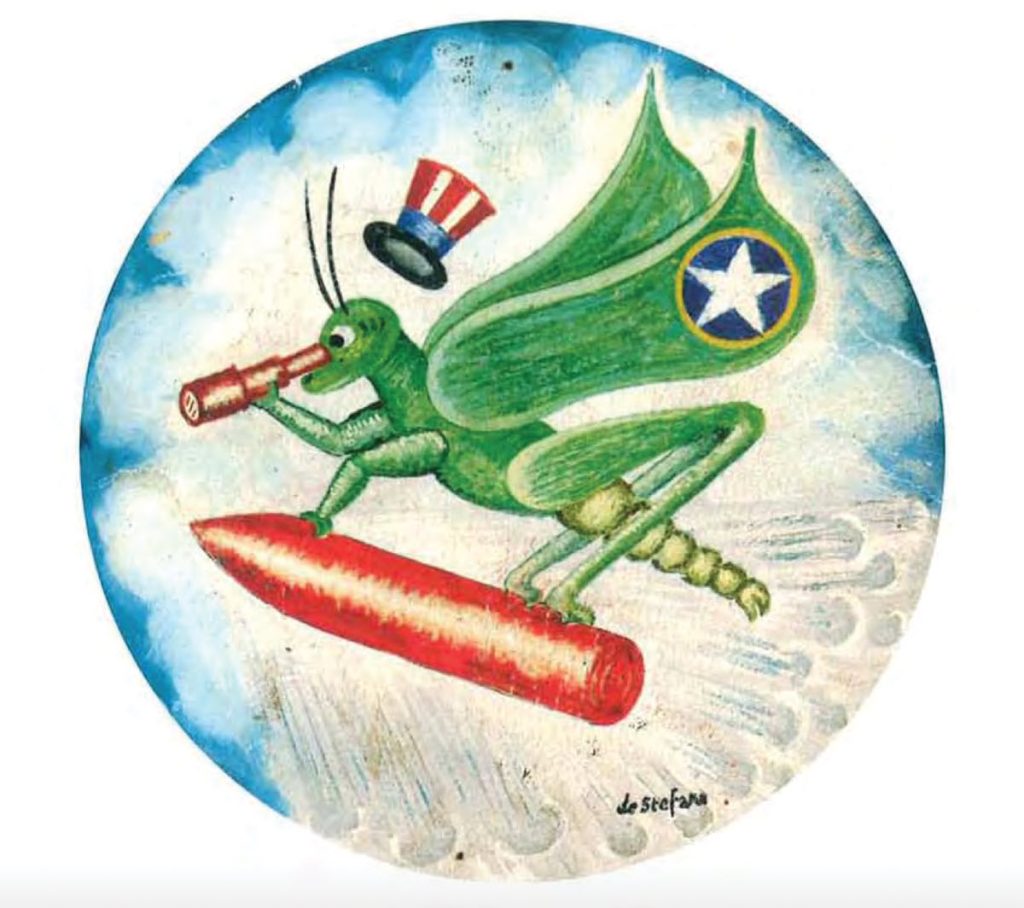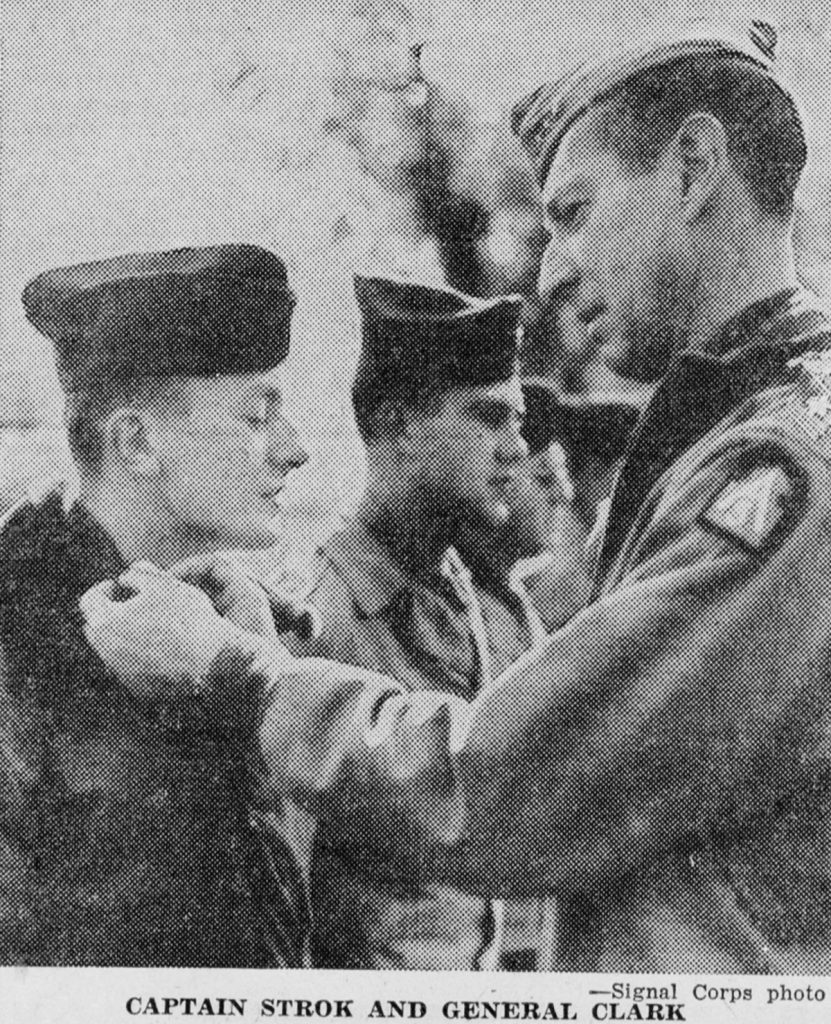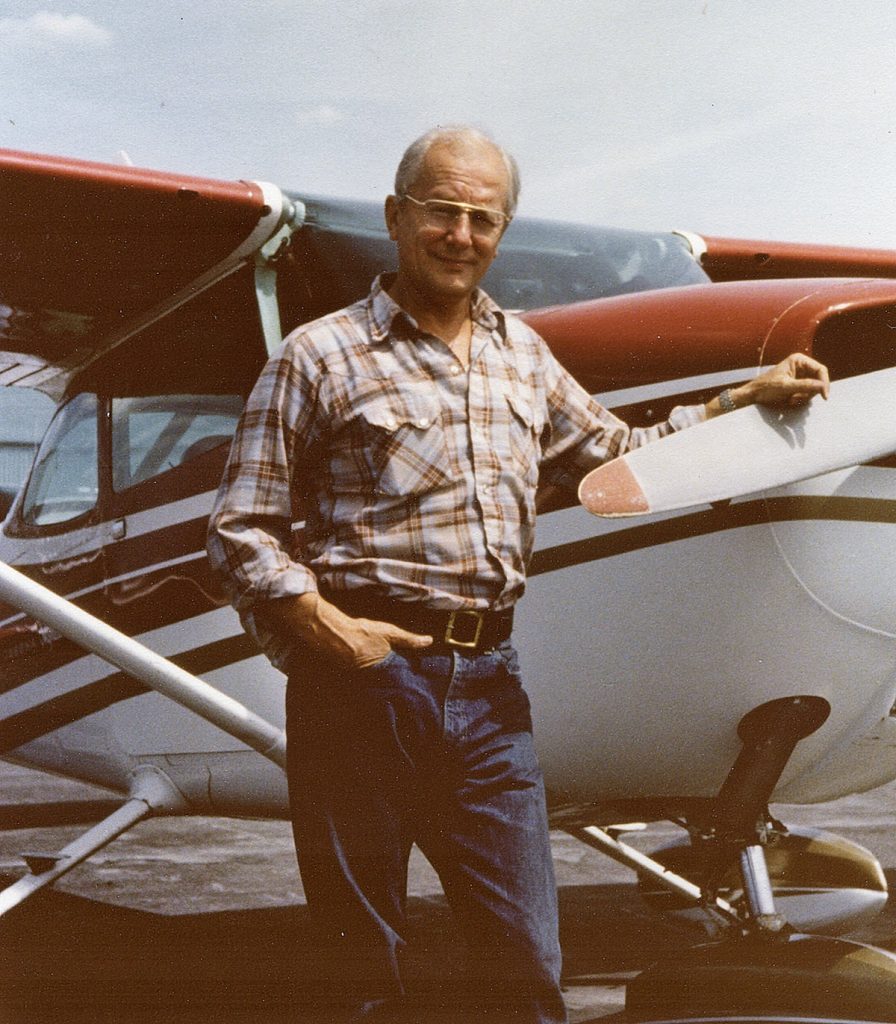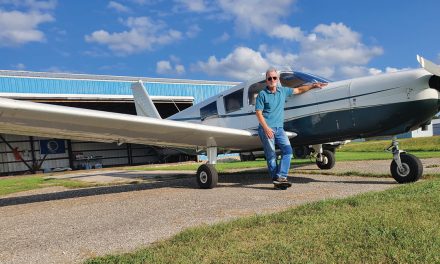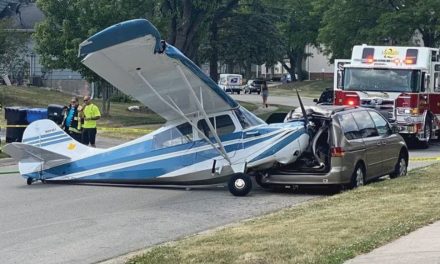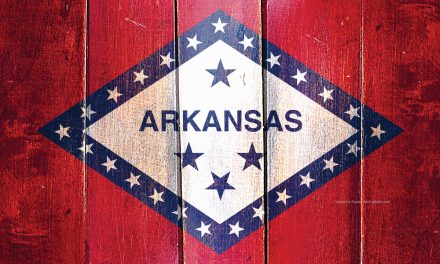“Piper Pilot”
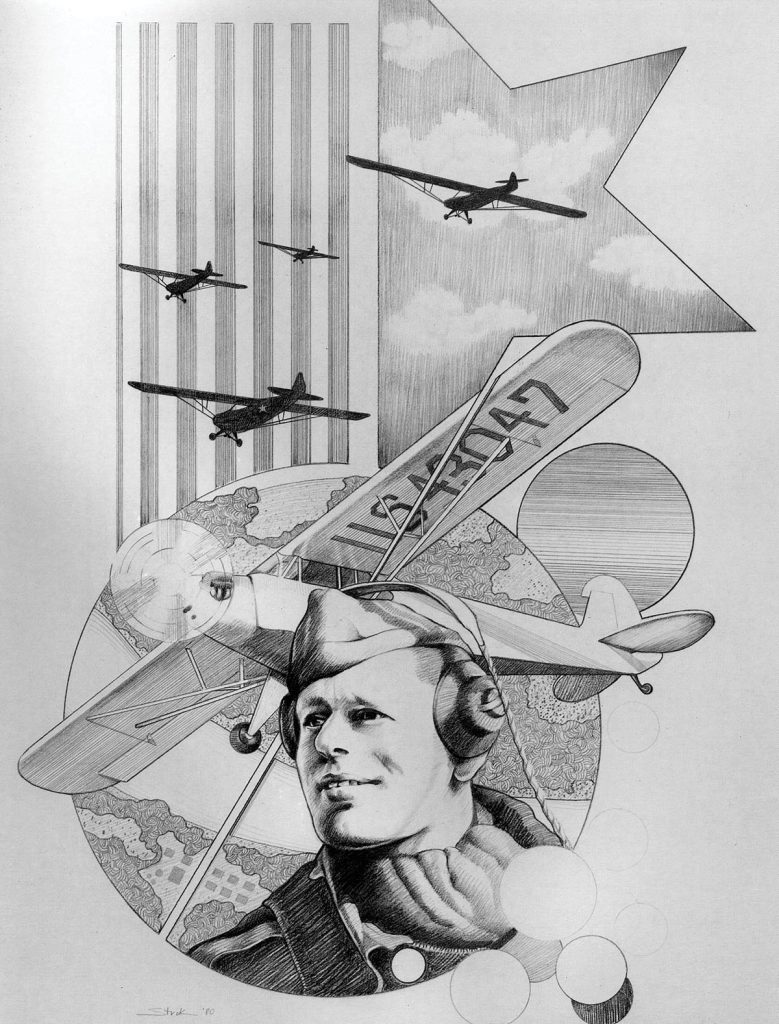
By Mike Jones
The Discovery
When not flying, a favorite pastime of mine is browsing antique shops and flea markets for all manner of antique scientific instruments, antique music boxes, clocks, barometers, phonographs, calculating devices, radios, and other assorted examples of early technology. Occasionally, in my quest for these artifacts, a unique piece of artwork catches my eye, and such was the case when I spotted a print titled “Piper Pilot.”
Always looking for something unique to hang on the walls of my hangar, I examined the image. It was a print, the portrait of what appeared to be a person of military background, smiling and gazing outward, set against a group of what looked like Piper Cubs. It was, apparently, a limited edition, number 23 of 50, and signed “Strok.”
Why the Piper aircraft? Who is this person? My curiosity was piqued! I added it to my pile at the checkout counter and took the print, and some assorted slide rules, home.
The Fun Begins
As with most collecting, part of the fun is researching the mystery and history of your latest acquisition. “Piper Pilot” was no exception. The subject of this portrait was totally unknown to me. In an effort to identify this Piper pilot, I carefully examined the artists signature again; “Strok,” the handwriting was distinctive and easy to read.
In the past, I would hit the library card catalogs and Readers Guide to Periodical Literature for research. Now, I find those things in the antique shops! Instead, I tried the Internet, searching for a connection between “Strok” and “Piper” and “Pilot.” After some poking around, I found an article from a Lock Haven, Pennsylvania newspaper that provided some clues. Lock Haven was the home of Piper Aircraft from 1937 to 1984, so I knew I was on the right track!
Identity Confirmed
The newspaper article revealed that one Army Major, Michael J. Strok (‘Strok’ rhymes with ‘sock’) was a former employee of Piper Aircraft Corporation, was in public relations at Piper, and was instrumental in laying out the manufacturing floor that enabled mass production of the Piper L-4, the military version of the Piper J3 Cub. It tells the tale of how the L-4 “Grasshoppers,” as they were called, were used for extensive observation, artillery fire control, and reconnaissance during both WWII and Korea, and since the print was signed “Strok,” I reasoned the Major was also a very talented artist. More on that point later. These tantalizing bits of historical information were enough to encourage a deeper dive into the background of this Piper Pilot!
One Good Lead Deserves Another
Wanting more detail and additional insights, I continued to scour the Internet for clues. Finally, after much research, a reference appeared for the book, “Eyes of Artillery, The Origins of Modern U.S. Army Aviation in WWII, by Edgar F. Raines, Jr., Center of Military History, United States Army, Washington DC, 2000.” This surprisingly detailed historical narrative describes the genesis and evolution of using small, light aircraft for observation, reconnaissance, and air courier service, marking the beginnings of the Army’s Field Artillery Aviation Program.
The Piper L-4 was used extensively overseas to spot enemy positions and guide artillery fire to the target. According to news articles of the day, the L-4, basically a Piper Cub with additional windows and Army paint scheme, was slow but nimble, and would fly very low, in some cases only 3 feet off the ground, dodging both sheets of enemy ground fire and attack from enemy aircraft aloft. They would swoop down gullies, over treetops, stand on a wing to turn tightly inside enemy pursuit aircraft, slow to a crawl as Messerschmitts would whiz past them, spin to descend rapidly, duck and weave to hide behind buildings, and land just about anywhere before hopping into the air again. This behavior lead to the nickname “Grasshoppers” for which these aircraft are known. Once fired upon, they would radio the location of enemy targets and report any range corrections needed to hit the target on the next volley. There are many tales of how these aircraft captured prisoners, brought lifesaving supplies to boxed in troops until help could arrive, and even a few of these aircraft fired bazookas mounted to their wing struts!
“Piper Pilot” Michael J. Strok was involved with all of this! To quote Edgar Raines, Jr., “Strok, who had designed the shop-floor layout of Piper Aircraft that made mass production of the L-4 possible, became an assistant artillery air officer for Fifth Army with the official title of air engineering officer. He ferreted out the needed supplies and equipment and through barter and scrounging, secured what was available. When Fifth Army closed down the air-observation-post school in the latter stages of the Tunisian campaign, Strok took the best mechanics and organized the Fifth Army Artillery Air Depot (Provisional). Although not recognized in formal Department of the Army unit lineages, it was the first in a long line of disparate organizations with similar missions, equipment, and even personnel designed to support organic aviation in the field.”

In addition to managing maintenance and repair logistics in faraway battle fronts like Africa, Sicily, and Italy, Mike Strok flew those combat missions, trained other pilots to fly those missions, and flew notable military personnel over the battlefields, including Fifth Army Commander General Clark, General Dwight D. Eisenhower, and the notable Life Magazine photographer, Margaret Bourke-White. It was at this point in my research that the simple portrait of a “Piper Pilot,” began to take on a much deeper meaning. What else could I possibly find?
Serendipity Strikes Yet Again!
Sometimes when searching the internet, among the relevant hits are a number of outliers. I puzzled over a few examples of seemingly unrelated photos and artwork in the search results. After all, what could the fanciful image of a little boy with butterfly wings, riding a grasshopper, perched on a leaf, possibly have to do with Mike Strok, Piper Pilot?
I was just about to hit the delete key when I noticed the signature… “STROK,” IN NEARLY THE VERY SAME HANDWRITING! I quickly followed the image link to a Longmont, Colorado, art studio. The owner and artist who drew the playful “Elf Hopper” was Susan Helen Strok! After a few emails back and forth it was confirmed! Susan is Michael J. Strok’s daughter! Susan drew “Piper Pilot” as a gift for her dad in 1980!
Family Insights! What More Can We Learn?
Susan has wonderful memories of her family, her father’s love of flying, his Army aviation career, and adventures keeping up with military family relocations. She kept the many news clippings her mother had saved detailing “grasshopper” exploits and her dad’s activities, military promotions, a detailed biography of Michael J. Strok, as told by his grandson, Johnathan Strok, based on extensive interviews with his grandfather Mike, and many wonderful photographs. Susan graciously shared all of this material and it was a pleasure hearing personal recollections and funny flying stories in phone conversations as well. I was overwhelmed. Thanks to Susan, I am able to share more about our Piper Pilot’s journey.
Inspired by Lindbergh and College Bound
Our “Piper Pilot” was inspired by the solo transatlantic flight of Charles Lindbergh and he followed the path of many young aviation enthusiasts by building and flying model planes, hanging out at the local airport in his hometown of Ithaca, New York, washing airplanes to get closer to them, and to mingle with his pilot heroes. He helped other pilots build a one-man glider, and a single place airplane powered with a motorcycle engine! Mike would have been right at home with the Experimental Aircraft Association, but it would be decades before the EAA was founded.
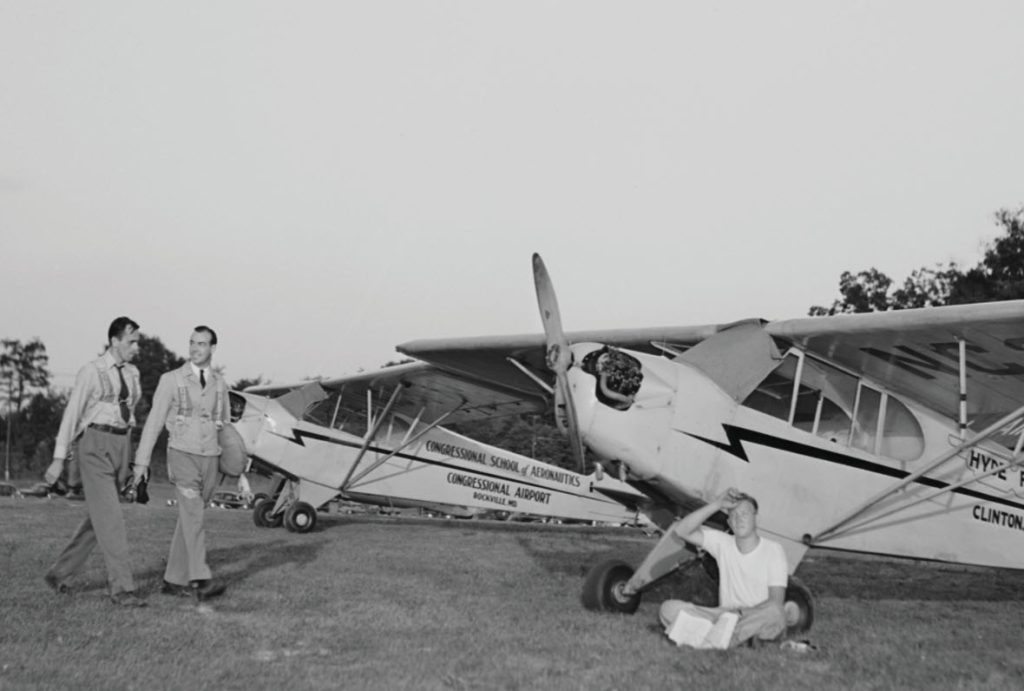
While Mike was in high school, from 1930-1934, he met his future bride, Helen. They both entered Cornell University in 1934 and dated throughout their college years, getting married after graduation in 1938, and moving to Lock Haven, Pennsylvania. While attending Cornell, Mike enrolled in ROTC. He chose field artillery and graduated with a Bachelor of Science degree and an Army commission as second lieutenant, Field Artillery – Reserve.
Lock Haven was the home of Piper Aircraft and Mike wasted no time applying for a job right out of college. In fact, he was one of six college graduate apprentices out of a workforce of 120 and gained practical on the job training in many departments, including experimental engineering, purchasing, and inventory control. This was valuable experience that would have a positive influence on his future Army maintenance and logistical support decisions.
Mike Strok, Commercial Pilot
One advantage of being a Piper employee included the Piper Flying Club, which offered dual flight instruction at the hefty, discounted rate of 56 cents an hour! At the time, dual was 3 to 4 dollars an hour. Mike took advantage of this to eventually earn his commercial pilot certificate and would qualify to ferry new Piper aircraft to dealers and buyers anywhere in the United States. To quote from Johnathan Strok’s interview with his grandfather, “The standard rate of pay was computed at three cents per air mile. This was just enough to cover the cost of gas and oil, and a one-way Greyhound bus or rail ticket back to Lock Haven.” Food was on your own!
According to Johnathan Strok’s biography of his grandfather Mike, “…a federally sponsored Civilian Pilot Training Program, CPTP, was initiated at selected colleges and universities to train 50,000 college students through private pilot level as a reserve to be used, if needed, by the US military.” Mike Strok passed both the CAA (forerunner of the FAA) Ground School Instructor and CAA Flight Instructor exams and taught both ground and flight instruction through the program at Lock Haven State Teachers College. This program was not only a boost to the sale of Piper aircraft, but also additional income for Mike’s growing family.
Start a Family, then Off to War
Remember, Mike Strok was an Army reserve officer. About one month after Mike and Helen had their first child, baby Kathy, Mike was called to “extended active duty” and was sent to the US Army Artillery School in Fort Sill, Oklahoma.
According to grandson Johnathan’s biography, Mike was sent there, “…as a student pilot in the first class to train as an Artillery Air OP (aerial observation post) pilot for new experimental test activity.” After graduating the program, Mike and the troops boarded the Swedish ship “Gripsholm,” along with about a hundred 155 mm Howitzers and 10 new crated L-4 aircraft. They were not told their destination until the last night before landing on the beaches near Casablanca, French Northwest Africa!
When Mike arrived in Africa, everything was new, from the strange climate and surrounding landscape to the missions, the maintenance, and logistical support of battle worn aircraft. Everyone was learning as they went. Mike, an excellent writer, contributed to the early development of training documentation to support the program. Eventually assigned as Engineering Officer in charge of all maintenance, training, and supply of the aircraft fleet at the Air Op School in Mascara (northern Africa), Mike was also chief check pilot for operation and maintenance. He was later assigned to handle maintenance and supply for aircraft in both Italy and Sicily. It was under the command of US Fifth Army General Clark in 1944 that Mike Strok was promoted to Captain.
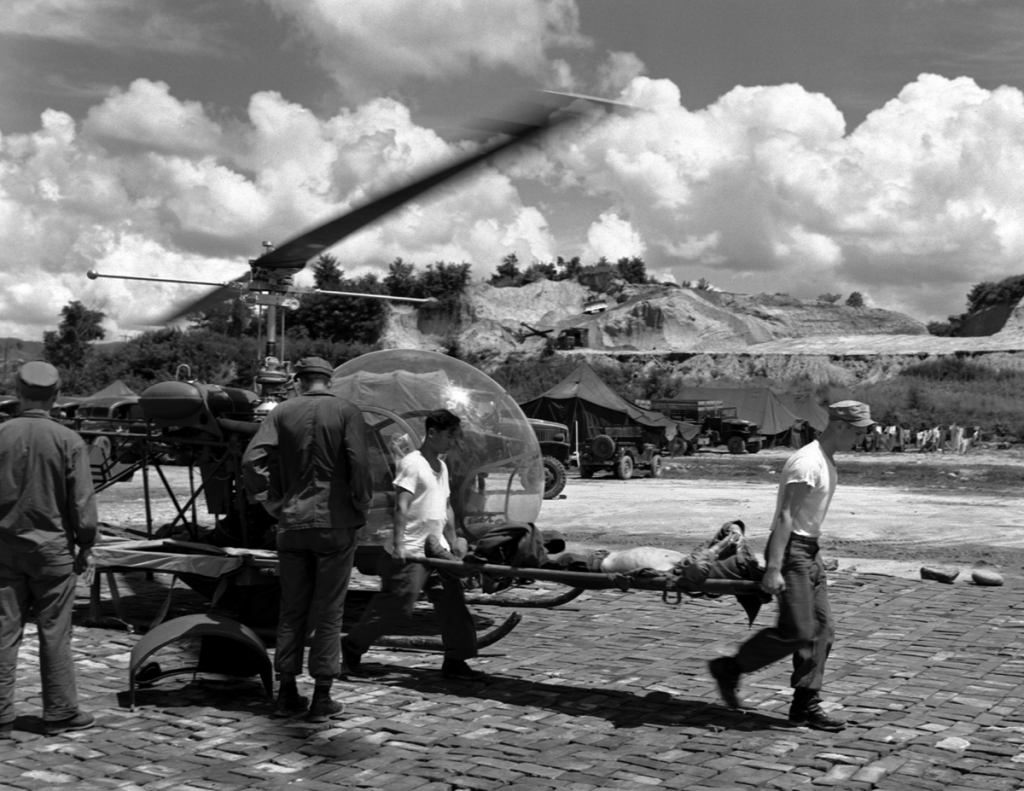
Mike’s Journey After WWII
Just when I thought that Michael J. Strok’s military career could not possibly get any more interesting, and surely his flying exploits had reached a peak with Grasshopper operations halfway around the globe, his grandson’s biography revealed more.
In 1950, helicopters were making early impressions on Army field operations and Mike Strok, in his logistics and maintenance capacity, was assigned to accompany several of these aircraft to Korea where he and his team would assemble them. The H-13 (think Bell 47) was used to transport wounded soldiers to Mobile Army Surgical Hospital (MASH) units.
In the summer of 1952, Mike was assigned to attend a two-part helicopter pilot school, six weeks at the US Air Force school in Texas, and another six weeks of Army tactical flight training at the Fort Sill School in Oklahoma. He was then ordered to Korea. His grandson, Johnathan, notes, “During his tour of duty in Korea with the US Eighth Army, Mike was assigned for several weeks, at his request, as a MASH helicopter pilot with the 44th MASH unit.”
In 1954, Mike returned to the US. His many military accomplishments and other important assignments throughout his career could easily fill a book. Mike served in the Office of the Chief of Transportation, Washington, D.C., as Chief of Aircraft Branch, Maintenance, Supply, Research and Development. He served in the Flight Test Division, Air Material Command, Wright Field, Dayton, Ohio, and at the Pentagon, HQ Department/Army G-4 (logistics), among others.
As is so typical with military personnel, Mike moved around quite a bit over the years to fill positions wherever assigned. In the early 1960s, Mike was stationed in Germany as a Battalion Commander. Susan, 13 years old at the time, remembers her mother, not wanting the family to be away from her husband, simply packing up five of the now six kids, hitching a ride on a coal freighter, and crossing the Atlantic to meet up with Mike near Frankfurt, Germany. It was at this time, Johnathan tells us, “Mike was the official military host of President John F. Kennedy when he had lunch in his battalion consolidated mess hall in June of 1963 on the occasion of his historic visit to West Germany.” Susan remembers the president’s visit well.
Colonel Michael J. Strok, Retired
Michael J. Strok retired from the US Army as a Full Colonel in 1967. A promotion to General was available, but it would have required an assignment to Vietnam. Helen was strongly opposed; Mike agreed with Helen, and worked for a time in the civilian sector with the Air Transport Association, retiring from there in 1977 to a family home in Edgewater, Maryland. The house, located on the water near the Chesapeake Bay and Annapolis, MD, was actually designed by Helen, who was also a talented architect!
In retirement, Mike Strok still LOVED to fly and Susan confirmed this. He could talk for hours about aviation. He relished taking family and friends flying and should a simple question about the experience arise, Mike would be more than happy to not only explain in detail, but also to demonstrate what the aircraft is capable of! Susan can tell some funny stories about her husband experiencing one of “The Colonel’s” impromptu lessons, and her own experiences with her dad when he asked her if she ever experienced Gs or landed an airplane.
Mike also loved to sail, a passion going back to his boyhood home in Ithaca, New York, where the family still has a cottage on Cayuga Lake. The Chesapeake Bay and all of its backwaters in the Annapolis area are a perfect location for sailing fun. Michael built a rather small sailboat and, for more utility, eventually purchased a 26-foot sailboat for leisure time sailing adventures, sometimes sleeping on the boat for an overnight stay.
Mike and Helen (also a pilot) kept more than one family airplane at Lee Airport in Annapolis, including a restored Piper Cub and two Cessna aircraft. I have flown into Lee airport many times, living and flying in the Baltimore area for nearly 30 years. If only I could have known Colonel Strok during that time, how wonderful that would have been.
OK, Over 1,000 Words
Like an iceberg, the image of our Piper Pilot, sticking out among the dusty artifacts of an antique shop, concealed the much larger body of history attached below the surface. I hope you have enjoyed uncovering the mystery of “Piper Pilot.” I would like to again express the association’s gratitude to his daughter, Susan Helen Strok, for so graciously sharing her dad with the Piper Owner Society membership.
In closing, I have one last historic ‘note’ from a news clipping Susan sent me. Army Pilots who flew those L-4 Piper Grasshoppers as “Eyes of the Artillery,” had their own marching song! Imagine for a moment singing it for Colonel Michael J. Strok, “Piper Pilot!” The tune is familiar, “Caissons Go Rolling Along,” on which the theme song of the United States Army is based.
Over clouds, under wires,
T’hell with the landing gear and tires,
We’re the eyes of the ar-till-ery.
In an out through the trees
We’re as hard to find as fleas,
We’re the eyes of the ar-till-ery.
So then it’s fly, fly, see
For the field artillery.
Shout out your data long and strong —
RANGE CORRECT!
So we’ll give the Axis fits
With our Maytag Messerschmitts
We’re the Grasshopper ar-till-ery.
—Robert McCormick

Mike Jones is the Piper Owner Society’s Aviation Director. He holds Commercial Pilot Certificates for both Airplane and Helicopter, is a Commercial Pilot for Unmanned Aircraft, is instrument rated, an active CFI, and has received the FAA Wright Brothers Master Pilot Award summer of 2024.

